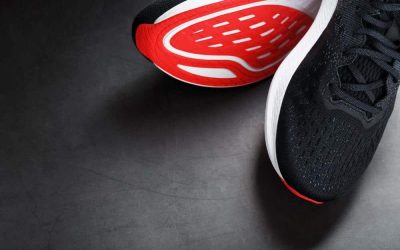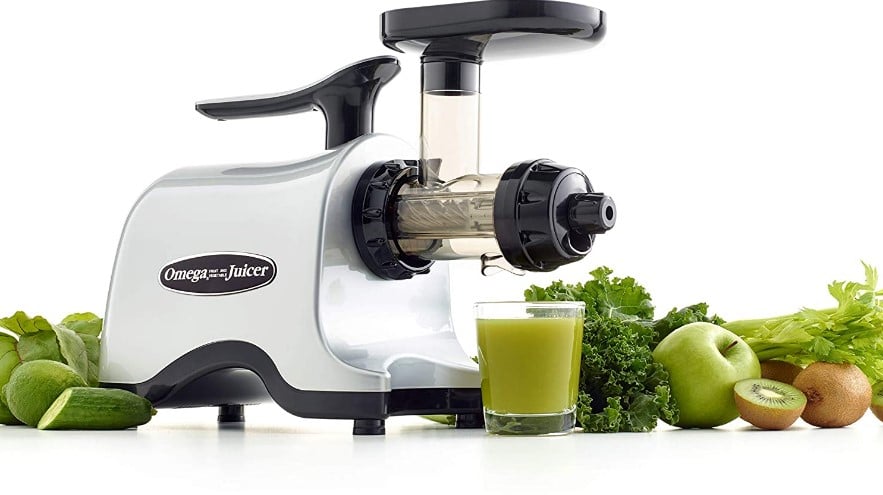If you are looking for a way to start your day with some added health and energy, juicing is the answer. Juicing allows you to drink fresh fruit and vegetable juices that have been extracted from whole foods. This article will give you information on how to use a juicer and how different ingredients can be used in juice recipes.
Contents
Understanding Juicers and How They Work
A juicer is a machine that extracts juice from fruits and vegetables. This article will cover how to use a basic model of this type of appliance with the understanding that many models are available for purchase.
Centrifugal Juicer
A centrifugal juicer is the type of machine most people will use. It runs at high speed to extract liquid from fruits and vegetables placed into it. The pulp that remains after extraction is dry, making this model an efficient choice for those who want to keep their juice as healthy as possible.
Juicers can be difficult pieces of machinery to work with and sometimes break down when in heavy use (though higher-end models are more durable). Centrifugal juicers usually have two screens or filters that need cleaning before they begin again – these screens filter out large bits of produce so you don’t end up drinking them with your juice!
Grinding Juicer
A grinder is another type of machine that will extract fruit, vegetables, and other foods like wheatgrass for consumption as juice. Unlike centrifugal machines, this model utilizes grinding teeth, which shred the food into small pieces while spinning at high speeds to extract liquid. This type of appliance has been shown in studies to create more juice than a centrifugal juicer.
Juicers usually come with small containers to catch the liquid and pulp that is extracted from foods, though some models will require you to purchase your own catcher as an accessory or replacement part.
Masticating Juicers (Cold Press Juicers)
Masticating juicers are the most efficient type of machine for extracting juice. This cold press juicer does not spin at high speeds like other models but instead crushes and grinds food to extract liquid. The resulting pulp is usually very dry, which makes this style less ideal if your goal is making lots of juice in a short period – it can take up to five times as long with some ingredients before you get enough liquid!
Read More: Best Cold Press Juicers for 2021 – Trusted Brands, Buying Guide and FAQs
The “pulp” from these machines has been shown in studies to be more nutritious than what comes out of centrifugal or grinder juicers because they do not excessively heat foods during extraction (which can kill nutrients).
You will also need containers that provide storage while containing any spills that occur during juicing.
Twin Gear Juicers
Twin gear juicers are very similar to masticating machines (cold press juicers) in how they work, but this model has two gears that spin slowly. This allows for a slower extraction process that can yield more liquid than other models with less effort on your part!
Read More: The Best Twin Gear Juicers for Your Home in 2021
As you can see, there are pros and cons to all types of juicers. The more time invested in learning how each one works will allow you to make an informed decision on which type best suits your needs!
Juicers vs. Blenders
One of the most common questions when considering how to use a juicer is if they are better than blenders. This article will help you understand how each one works and how it compares with other types so you can decide which appliance best fits your needs!

The blender has been around for many decades now, but some people may not know how to use this type of machine properly. Unlike juicers which only extract liquid from fruit and vegetables (i.e., no pulp), these machines blend everything to produce smoothies or ice cream-like desserts made out of whole foods like fruits, sorbets, and veggies, nuts (and even cake batter!).
This means that a blender can be an excellent choice for getting as many nutrients out of their ingredients as possible. The downside is that this machine may not extract the same amount or quality of liquid from fruit and vegetables as how some juicers might – so it’s important to keep these differences in mind when comparing how each appliance works!
Do You Need A Juicer?
Here are a few questions to ask yourself before ordering a juicer online:
- Do you make juice often?
- Is the pulp something you’re okay with throwing in the trash or compost making, or will it bother you?
- Do your family members have allergies to some of the fruit juices (i.e., citrus)?
- What type of juicer do you prefer?
Some people might not need a juicer because they only make juice once in a while. If pulp won’t bother you, then it’s probably okay to just use your blender for the occasional fruit and vegetable smoothie!
If you are interested in how long each appliance takes, here is how many minutes it took one reviewer to extract various types of fruits:
- A centrifugal machine produced about 22 ounces of grapefruit juice within four minutes.
- With masticating machines (the most efficient), extraction time can be up to five times slower than other models – meaning that if someone wanted three cups worth of this type, they would have needed 20 minutes.
- Twin gear juicers could produce up to 34 ounces of juice within five minutes.
As you can see, how long it takes for each appliance type varies greatly depending on the ingredients being used and how much liquid is extracted from them! This makes understanding how each machine works even more important if a person has specific needs or goals when using one!
How to Use a Juicer?
It is important to understand how each type of juicer works before deciding which one you want. But, if a person has their heart set on using a specific appliance and it doesn’t work how they expected – that can be frustrating!
However, there are some steps people can take to get the most juice from any fruit or vegetable:
– Add ice cubes to the bowl beforehand (to help keep fruits cold)
– Cut up produce into small pieces because this will enable more surface area for extraction
– Juice ingredients with higher water content first, then move on to those with less liquid-like oranges or green vegetables. This helps prevent clogging due to too much pulp building up in the machine over time. Juicing these types last will also help with how long it takes to extract juice from the produce on top.

– Keep in mind how much pulp you want after juicing and adjust accordingly (i.e., if a person wants minimal, they should choose machines that retain more fiber). If this doesn’t matter, centrifugal or masticating models are great because they keep all the liquid inside!
– Add herbs for extra flavor and nutrients which may not be extracted by just fresh fruits and vegetables alone
– Extracting juice from hard produce like carrots and apples requires some patience as it might take longer with how these machines work. However, this can be a good thing! That is because the pulp will not dry out during juicing, which means less waste after extracting (and more nutrients!). It takes about three to four minutes to extract six ounces worth of apple or carrot juice.
-Slow down your juicing process to avoid letting heat get the best of you and your drink.
-Drink and enjoy the juice, store what you can’t drink now, and clean your juicer.
What Should You Juice In Your Juicer?
It is up to you how much pulp you want inside your drink! If a person wants minimal, they should choose machines that retain more fiber. However, if this doesn’t matter or gets in the way of how they plan on using their juice (i.e., for cooking), then centrifugal or masticating models are great because they keep all of the liquid inside and produce less waste after extracting – meaning nutrients aren’t being tossed away with dry pulp as other juicers might do.
The best fruits and vegetables for juicing: apples, carrots, kale, spinach, grapefruit
What Kinds Of Fruits And Vegetables Can Be Juiced?
Almost anything can be put into a juicer as long as it is a fruit or vegetable. However, some items might not be easy to juice with how certain machines work! Some common fruits and vegetables that people enjoy juicing include apples, carrots, kale, spinach, and grapefruit.
How to Clean a Juicer?
It is important to clean a juicer after using it. However, this should be done depending on the type of vegetable or fruit that was processed and how long they were left inside before being removed (i.e., the pulp could dry out over time).
– Centrifugal: rinse off any remaining items with water
– Masticating: remove all parts from within the machine, then wash them in warm soapy water for about three minutes each; use brush attachment if needed! Dry everything completely afterward. Wipe down outside of the appliance as well while an item is still not properly dried yet – do not wait more than 24 hours until the next cleaning session takes place!
Read More: Best Easy to Clean Juicers – Top Amazon Product Reviews, Buying Guide and FAQs
How Often Should You Clean Your Juicer?
All juicers need regular maintenance and cleaning (i.e., how often a person wants to produce pulp inside their drinks). It is recommended that people clean their appliance after each use, but this may not always be possible depending on how someone plans on using their machine for more purposes outside of just making juices with fruit and vegetables like wheatgrass.
How Long Does Fresh Juice Last In Your Fridge?
Anything that has been juiced should always be stored inside a refrigerator because how liquids oxidize over time which means they’ll lose nutrients from sitting around and being exposed to heat, light, and oxygen without having any kind of protection against them like how some types of machines might do when they have airtight seals on their parts.
– Centrifugal: keep refrigerated at all times! Juice should be consumed within 24 hours of extracting it or else it will go bad.
– Masticating: store in the refrigerator for up to three days (72 days).
How Often Should You Juice?
It is up to how often someone wants fresh juice if they want to buy a juicer or not. If this sounds like something that could be done weekly, it might make sense for them to purchase their machine and use it in the mornings before work! However, there are other ways of getting nutrients without using one (i.e., eating more servings of fruits and vegetables).
– Centrifugal: every day
– Masticating: once daily; three times a week at minimum (72 days)
Final Words
Juicing is a great way to get all the nutrients you need in your diet. It’s especially beneficial for those trying to lose weight or have health issues like diabetes, high blood pressure, and heart disease.
The tips we’ve provided should help make juicing easier than ever before, so it becomes something that anyone can do no matter what their skill level with cooking and kitchen appliances may be. If you think these simple tricks will work well for you but want some more information on how to use a juicer correctly, let us know in the comment section!
We would love nothing more than to show you how easy and fun this fresh lifestyle approach can be if done right from the start.




















2 thoughts on “Juicing for Beginners – Get in the Know How to Use a Juicer”
great post, anything for the mid level!
Great one!